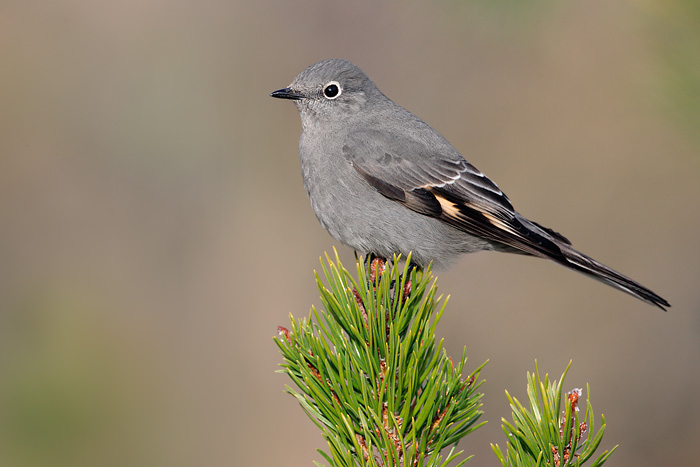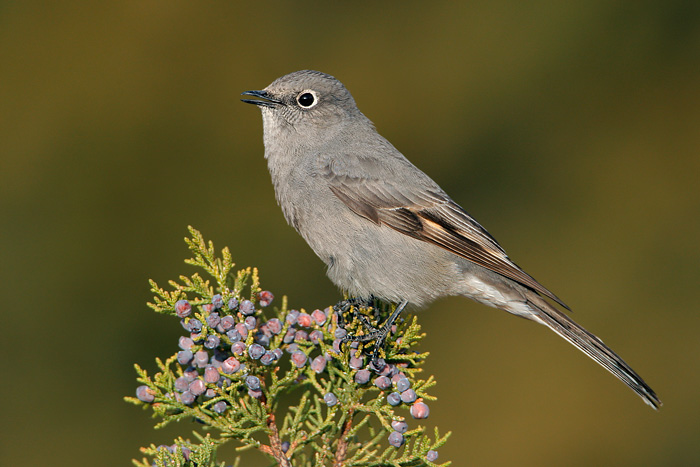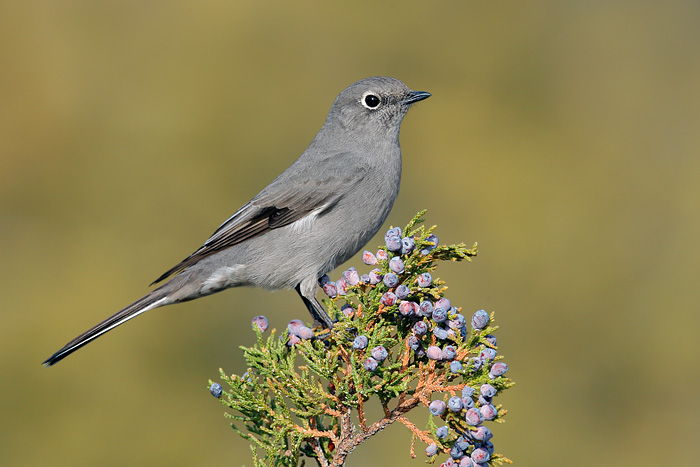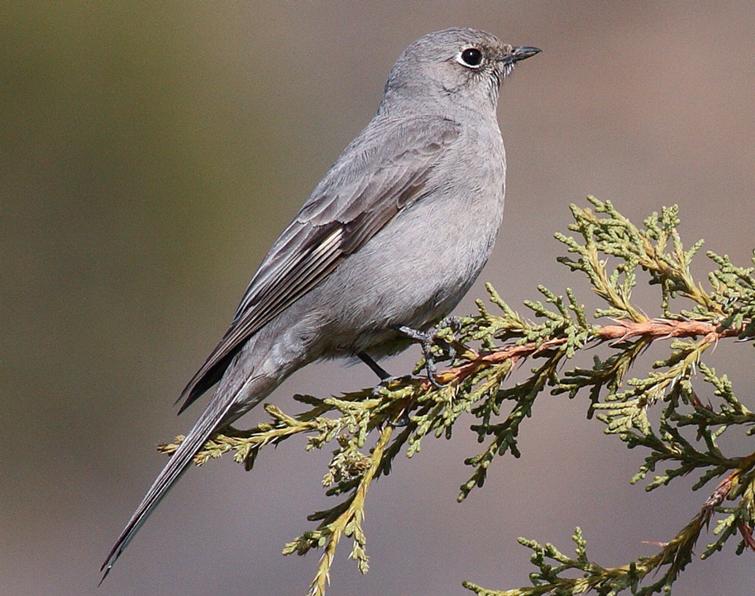
Myadestes townsendi
TAXONOMY
Ptiliogonys townsendi Audubon, 1838, Oregon.
OTHER COMMON NAMES
French: Solitaire de Townsend; German: Bergklarino; Spanish:
Clarнn Norteсo.
PHYSICAL CHARACTERISTICS
7.9–8.7 in (20–22 cm); 1.1–1.2 oz (30–35 g). Adults are gray
overall; black tails with white outer feathers that show during
flight; buff wing patches near the base of blackish flight feathers;
white eye rings. Juveniles are brownish gray overall
marked with buff and white scalloping on upperparts and underparts.
DISTRIBUTION
North America from Alaska south to Mexico, east to southeast
Wyoming, central Arizona, western South Dakota, and
Montana.
HABITAT
Open stands of conifers, edges of extensive conifer forest, often
near streams and with little or no undergrowth; also high
mountain slopes, cliffs, and ravines up to and above the tree
line.
BEHAVIOR
Often conspicuous; solitary or in loose parties, typically
perched upright on exposed perch on tree or post, flying up to
catch prey or dropping to the ground to forage.
FEEDING ECOLOGY AND DIET
Insects, including moths, beetles, caterpillars, ants, bees, and
wasps; also eats a wide range of berries.
REPRODUCTIVE BIOLOGY
Breeds May–July, nest of bark, grass, and roots built by female
in bush or shrub or on the ground, often near a stream; three
to four eggs incubated for 11–14 days, chicks fledge after
10–12 days; two broods.
CONSERVATION STATUS
Not threatened, though uncommon in much of range.
SIGNIFICANCE TO HUMANS
None known.
Photo Gallery of - Townsend’s solitaire




 Animalia Life
Animalia Life